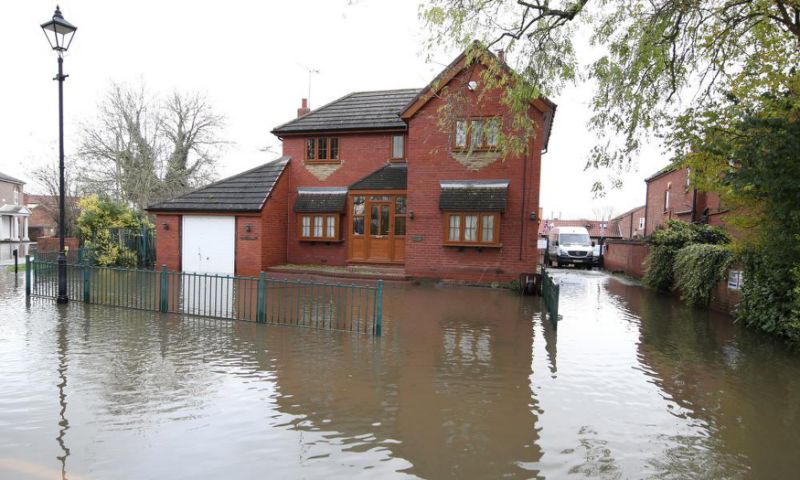
One in 10 of all new homes in England since 2013 have been built on land at the highest risk of flooding, official figures reveal, potentially leaving tens of thousands of people in greater danger from extreme winter storms.
The number of properties built in these high-risk areas annually has more than doubled in recent years, with more than 84,000 new at-risk homes in total since 2013, according to a Guardian analysis of government data.
In the aftermath of the devastating Storms Ciara and Dennis, experts and council leaders have warned that residents are being left at risk in part due to the pressure on local authorities to build thousands of new homes despite a dearth of suitable sites.
Prof Robert Wilby, of the University of Loughborough, said the government should review its housebuilding target in light of the increasing risk from floods: “We’re compounding the existing risk by continuing to build on the floodplain. The more we’re paving over natural areas the more we’re making it easier for water to move across the land and enter rivers.”
The figures emerged on Wednesday, with householders across large parts of the country braced for further bad weather, with another month’s worth of rain expected in the next 24 hours in some places.
House building over time chartThose already battling the aftermath of several days worth of rain have been told to expect even more, with pockets of North Wales, northern England and Scotland among those in line for further deluges.
Thousands of people have already been affected by the most damaging winter storms in recent times, with the worst hit areas in South Wales, Herefordshire, Worcestershire and Shropshire, where major incidents have been declared.
With many people forced to evacuate their homes, experts warned that targets given to local authorities for new builds often fail to take into account local flood risk.
The government has promised to build 300,000 new homes a year by the mid-2020s to help solve the UK’s chronic housing shortage. Data from the ministry of housing, communities and local government (MHCLG) shows that the number of new houses built on land at the highest risk of flooding has risen from 9,500 in 2013 to 20,000 in 2017-18, following a peak of nearly 24,000 the previous year.
In Calderdale, the West Yorkshire valley that has been hit by four floods in the past eight years, one in five new homes have been built on land with a high risk of flooding since 2015. The data relates to houses built in what the Environment Agency calls “flood zone 3”, the highest level of risk where the likelihood of flooding is 1% or higher each year.
Tim Swift, the leader of Calderdale council, said local authorities had been left in an “impossible position” due to the housebuilding targets imposed on them by central government and the pressure to alleviate the flood risk.
“Councils are stuck between the government demands for housebuilding and the difficulties for identifying suitable sites,” he said. “There’s got to be a look at planning policy and the relationship between housing numbers and the pressures on flooding.”
Wilby said the issue was one of several that needed to be examined by the government in light of storms Ciara and Dennis. He said ministers also needed to rethink contingency planning for widespread disasters like these – with multiple agencies with often overlapping roles on the ground – and ensure the regular maintenance of flood defences and drainage systems.
chartAnother key issue is funding. Boris Johnson has committed to spending £4bn over the next five years on flood defence schemes. However, the Environment Agency and independent experts have said this is too little and that money needs to be committed way beyond 2025 so planners can mitigate future disasters.
“A greater level of investment would mean that we could prepare better for floods,” said Prof Hannah Cloke, of the University of Reading, who is helping the Environment Agency respond to the widespread damage caused by storms Ciara and Dennis.
She said that with more funding “people would not be at such great risk” and planners could make bold changes to cities and landscapes that at the moment “we just can’t do”. She added: “You can’t plan ahead to deal with climate change unless you have a sustainable funding source to take those big measures, to redesign cities and landscapes so we can design better for floods.”